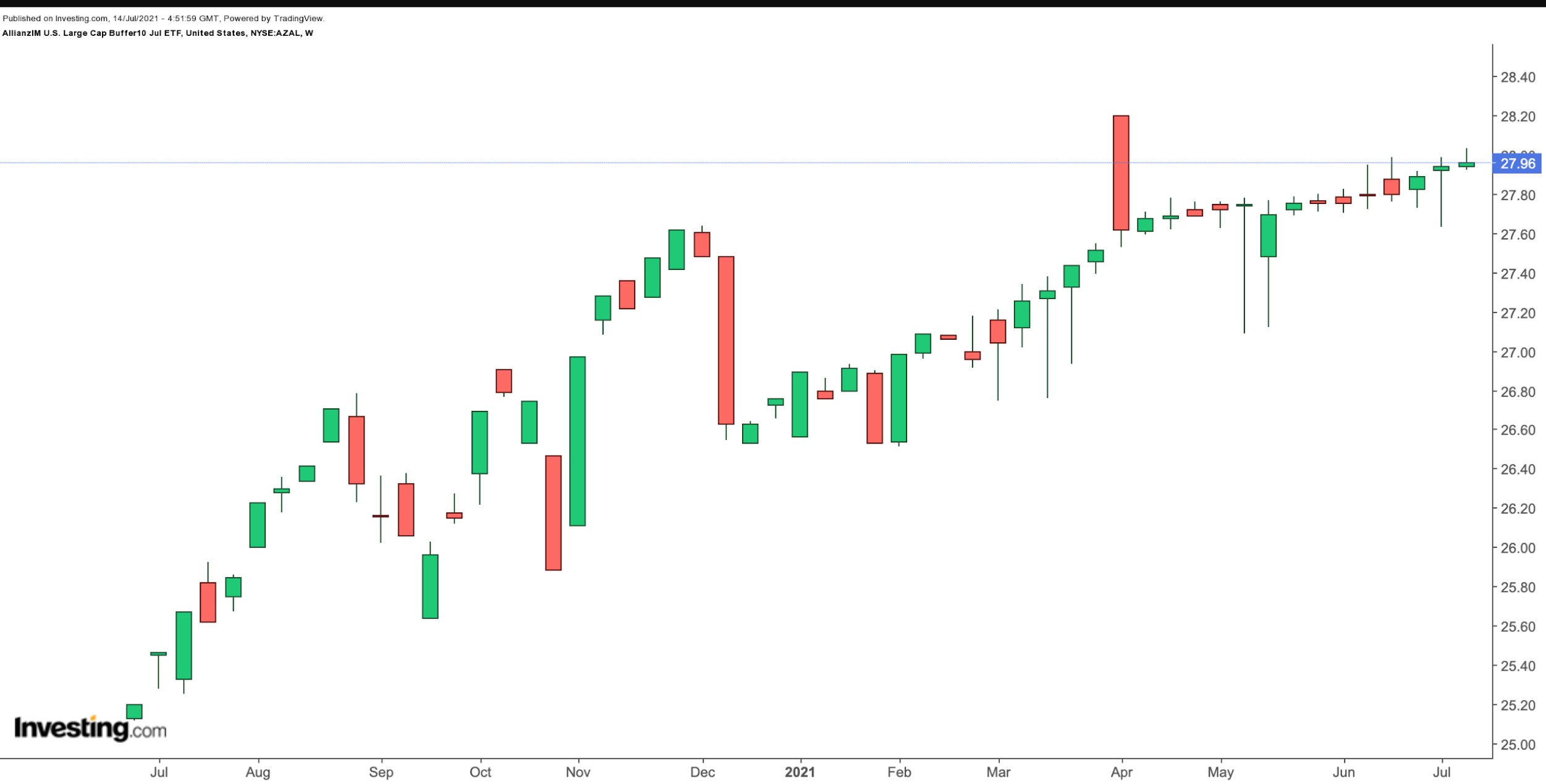Exchange-traded funds (ETFs) were first introduced in the 1990s as a vehicle to give investors exposure to a broad group of U.S. equities. Over the years, issuers have launched a variety of funds with a range of niche themes, including buffer funds, which are also known as defined-outcome ETFs.
These funds enable investors to “mitigate risk and reduce volatility.” By customizing the range of returns based on the equity index movements, investors can earn up to a maximum return, while having the safety of a predetermined downside buffer.
These ETF buffers are like airbags in cars—they’re cushions that protect investors in the event of a major crash. Recent metrics highlight that as individuals approach retirement age, the “willingness to take above-average or substantial investment risks” decreases. Many of these risk-averse investors are likely to forgo some of the potential gains when an instrument can protect them from losing their hard-earned capital.
Each defined outcome fund typically has a stated loss percentage that it would protect against—9%, 10%, 15%, 20% or 30% before fees—usually over 12 months. That percentage is the buffer amount. Bigger buffers mean correspondingly lower limits on gains, however.
The upside cap and downside buffer amounts are predetermined for the whole outcome period and are clearly highlighted in a given fund’s prospectus.
Investors can trade buffer ETFs at any point in time, starting from the launch date. However, stated cap and buffer levels apply only to investors who invest at the start of the outcome period and hold for the entire outcome period. Those who buy the fund after the first date or sell before the last date of the outcome period may not necessarily achieve the maximum return.
These funds invest in one-year options linked to a broad benchmark, like the S&P 500 index. Readers might be interested to know that the index has returned about 16.6% since the beginning of the year and hit an all-time-high on July 13.
With that information, here is our buffered-outcome ETF for today. This fund could appeal to investors who want to invest in SPDR® S&P 500 (NYSE:SPY), which tracks the returns of the S&P 500 index. It would enable them to have exposure to some of the annual gains in the index while keeping the downside risks under control.
AllianzIM U.S. Large Cap Buffer10 Jul ETF
Current Price: $27.96
52-Week Range: $25.25 - $28.20
Expense Ratio: 0.74% per year
The AllianzIM U.S. Large Cap Buffer10 Jul ETF (NYSE:AZAL) tracks the returns of the S&P 500 index up to a pre-specified upside cap, while buffering investors against the first 10% of losses over the outcome period, currently from July 1, 2021, to June 30, 2022.
The starting cap of the fund was 10.70%, gross of the 0.74% management fee. In other words, if held during the outcome period, the fund could return a maximum 9.96%.

The actively managed fund utilizes Flexible Exchange® Options, also known as FLEX® Options, on the S&P 500 index. Its net assets currently stand at $34.94 million.
According to Johan Grahn, head of ETF Strategy at AllianzIM:
“Inflation is one of the worst enemies for people in retirement in particular, posing a dual-threat of decreasing bond prices and hollowing out of equity prices. Investors facing these challenges may find the middle ground they’ve been looking for in AllianzIM Buffered Outcome ETFs.”
In addition to buffer ETFs offered by Allianz Investment Management (AllianzIM), there are other similar products offered by different fund issuers, including First Trust, Innovator Capital Management and TrueShares.
Defined-outcome funds offer exposure to other benchmark indices, like the Russell 2000 and NASDAQ 100. Interested investors might want to check similar funds whose outcome period will start in the weeks ahead. For example, the current outcome period for the Innovator S&P 500 Power Buffer ETF - August (NYSE:PAUG) will end on July 31. The new period will start the next day.
Investors who would like to bypass short-term market fluctuations to a degree while benefiting from the returns in the benchmark index might want to keep buffer ETFs on their radar. We will introduce other buffer exchange-traded funds in the coming days.
